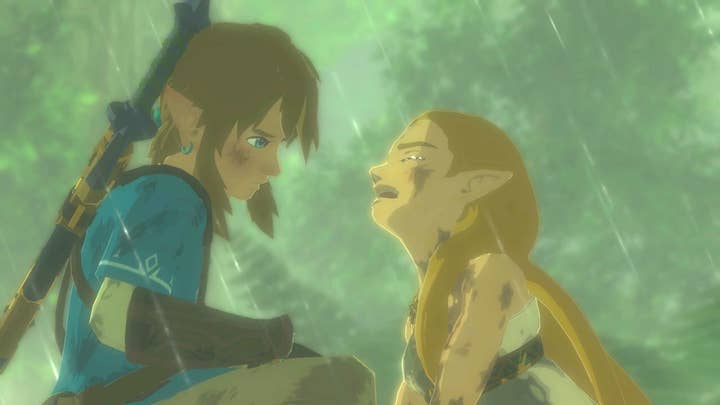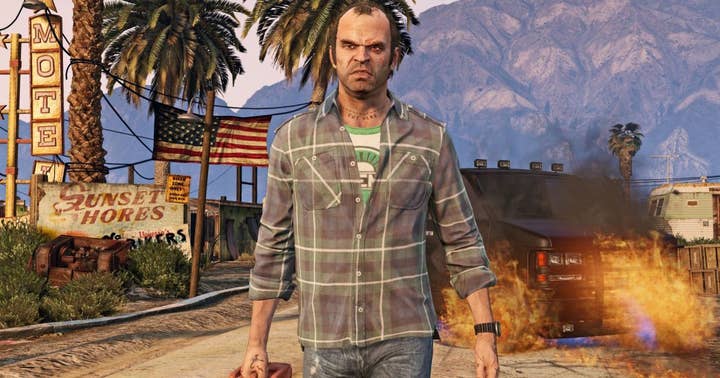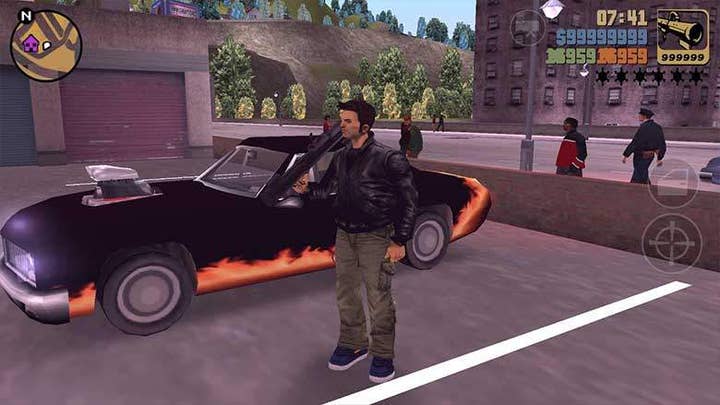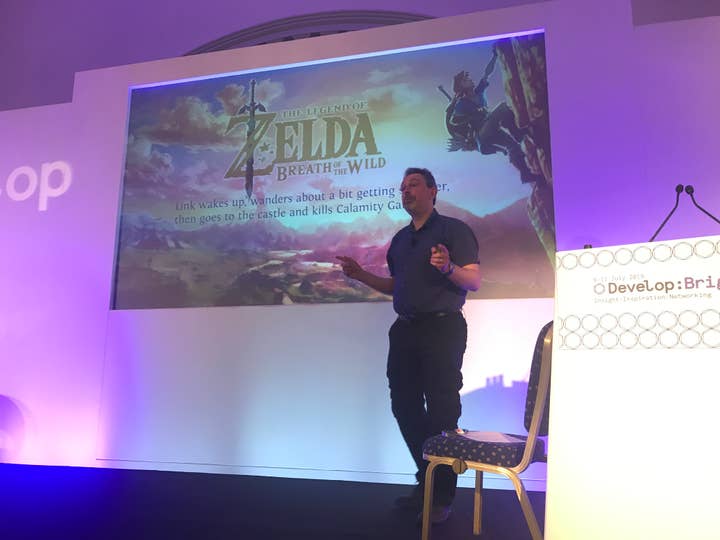Four questions to help improve your narrative design
Narrative designer Chris Batemen takes Develop:Brighton attendees through the many avenues for plot, agency and theme in video games
Narrative design is "one of the toughest crafts in the whole of video games -- made even tougher by the fact that most developers don't even think that it's part of their process."
That's according to Chris Bateman, a narrative designer who has worked on more than 50 games in his career, most recently Tropico 6 and the acclaimed PSVR adventure The Persistence. In his Develop:Brighton 2019 talk, entitled 'The Narrative Design Survival Guide', he looked at how stories can best be intertwined with gameplay.
"We don't really know what we're doing when it comes to getting the most out of stories in video games," he said. "The way forward is to open a dialogue between conventional writing and game design. That's what narrative design is -- the crossover between conventional writing techniques and game design techniques."
But what are the conventional writing techniques? Bateman said they can be crudely broken down into character, plot and theme, noting that the latter "tends to get overlooked, particularly in video games."
In looking at how these can be explored in your game's narrative design, he proposed four questions that developers should be asking themselves.

How does the story system align with the other game systems?
"I don't tend to think of story being the other side of coin in games," Bateman said. "I tend to think of story as one more game system and they've all got to work together."
He opened his talk with the example of Zelda: Breath of the Wild, which can either be seen as the story of Link, the failed hero who rebuilds himself and ultimately defeats Calamity Ganon, or of Zelda, who eventually learns to master her power and defeat Ganon with Link's help.
"We don't really know what we're doing when it comes to getting the most out of stories in video games"
"The trouble is every video game has something right in the heart of the story that can mess it up -- and that's the player. The player doesn't always want to co-operate with your story. The story of Breath of the Wild, for most players, is less like either of those two plot synopses than it is all the little anecdotes they have about their journey through the world of Hyrule throughout their time playing the game."
This is a problem that has arisen with the growing popularity of open worlds. The solution most developers use when delivering a story in this type of game is following the template laid out by Grand Theft Auto III: players follow waypoints that take them to the next story event, and said events are arranged so they eventually see the whole map.
"In between participating in the story, the player's free to doss around and do whatever they want in the game world," said Bateman. "But as far as the plot goes in an open world game, you're mostly just following this chain of waypoints to trigger the next story event."
Breath of the Wild notably doesn't fit this model, because the only mandatory waypoints are the first four shrines and then the final boss. Bateman suggests this is the first open narrative structure we've seen since the original Fallout, which also allowed confident players to go straight to the boss.

That said, the game does have more narrative elements, such as the unlockable flashbacks that fill in Zelda's story, but these can be delivered in any order -- or missed entirely.
"Narrative design is structural design," Bateman said. "Both video games and stories have structures that they work by. Narrative design is the challenge of making story structures work with game structures.
"In an open world game in either of these styles, what this essentially means is taking the plot and folding it into the geography of the world. You have all the events that happen in your story and you need to make them work physically in the game world because that's where the player is going to be."
What's the relationship between the mask and the character?
In video games, the avatar you control is both a character within the game's fiction but also a "mask the player puts on to enter the game world" -- but there's a problem.
"The way the player wants to behave once they're wearing the mask doesn't have to be the way the character ought to behave in the game world," said Bateman. "There's an invariable tension between the mask and the character."
"The trouble is every video game has something right in the heart of the story that can mess it up -- and that's the player"
The standard solution in most commercial video games is the player "takes turns" with the developer in playing the character. They have full control for most of it, but the developer takes over for the cutscenes. It's a great way to deliver character development and plot but doesn't necessarily allow much player agency.
"The way we tend to resolve that is to give the player a nice illusion of agency by giving them big choices at periodic moments in the story," said Bateman. "Choices in video games work well, but it isn't much agency you're giving the player. Whichever way you go from that choice, all of those outcomes are plotted out by the team.
"But it works, players buy into it, they've played the character and watched the cutscenes, they're engaged with the story so those choices matter when the time comes."
The second major commercial model is where the avatar's personality is aligned with the "player's propensity for mischief." GTA protagonists are a prime example -- it's not out of character for these figures to go on a rampage between missions. This model is great for delivering plot and enabling player agency, but naturally doesn't lend itself to character depth.
Art games have very different models, Bateman notes. One example he offered was Everybody's Gone To The Rapture, where the player essentially takes on the role of a witness to something that has already happened. Alternatively, developers can invite players to take on the role of a specific and more defined character, such as in Shenmue.

Which plot devices does the player use to tell their story?
Video game plots aren't just advanced by reaching the next destination or cutscene. How the player gets there, and the anecdotes they can generate on the way all feed into the overall story (or at least their experience of it).
The actions players take are, Bateman said, effectively plot devices that help advance the story, and they can take a myriad of forms.
Using another Zelda example, Ocarina of Time (and the similarly structured games that followed it), Bateman pointed to the weapons, special items that can be used in specific circumstances, helper characters like Navi, and staple characters like Ganon, Zelda and Impa as examples.
"If games are an art form -- and I say they are -- we ought to use every element of that art form at its creative best. That means making story themes align with game mechanics"
"Zelda has a huge suite of plot devices, which means it costs a hell of a lot to make. If you're going to be making a video game, Zelda's suite of plot devices is a bad thing to copy because it costs a fortune to make this style of game. There's too much. It's great for the player, but there's a reason Zelda games don't ship very quickly and Nintendo has to constantly hold them back and tweak them."
By contrast, classic Tomb Raider titles had a "much more slimmed down set of plot devices", mostly relying on players' ability to negotiate the environment, climbing and scrambling to narrowly avoid traps, as well as using weapons to dispatch all the animals that want to kill Lara.
"It's not enormously rich in terms of your narrative potential particularly because a lot of time is spent dying as you try to work out how to overcome traps," said Bateman. "But it works, it delivers the kind of story that makes sense for the kind of world Lara lives in."
A modification of this model can be seen in the original Assassin's Creed, where the plot devices are limited to a small set of weapons and, again, the ability to negotiate the environment. The difference here is the way Ubisoft subtly signals opportunities to the player.

"If you see white doves on the edge of a rooftop, it tells you unequivocally, 'You may jump off here, there will be a haystack to receive you, no matter how ludicrous it is to fall that distance.' That's enormously empowering to players and ups their agency in the game world tremendously."
Bateman continued: "This is a really elegant piece of narrative design, despite a couple of missteps. It scales everything down to just what's going to empower the player's agency in operating in the world.
"The suite of plot devices you give to the player give them their agency in the world and the stories the players can tell in the world will descend from whichever ones you choose to give them. You can have a very small set if you can use them clevely, but most big budget games like to give them player a large range -- or give them a small set like in Assassin's Creed, but give them clever ways to use them in the environment."
Where do plot, agency and theme emerge from your game's structure?
"The way you structure your game is going to set up your options for the way the plot advances, the agency the player has and for any theme you might be able to tell in the level of the game," Bateman explained. "You can also express theme through the story materials, but if games are an art form -- and I say they are -- we ought to use every element of that art form at its creative best, and that means making the themes of the stories align with the game mechanics as well."
He admits this is "very difficult to achieve" but one way to do it is to reconsider the core gameplay loop, the thing the player does over and over again. Of course, this depends on how the story is structured.
"There are real opportunities for artistic, creative applications of theme in these worlds where you're free to move around and there's no chain of story events"
In a classic old-school linear structure like Ghosts and Goblins, players are stopped at various points along the level. That's fine for delivering a plot, but "terrible for agency and doesn't really give you anything you can do for theme because everything's a straight line."
"I love Ghosts & Goblins, don't get me wrong, but it's very difficult to make an interesting theme adhere to a linear structure."
In the Metroidvania structure -- or Zeldroid as it should more accurately be called, according to Bateman -- you obtain items that let you get into new locations. This helps with plotting, because it creates checkpoints you know players will pass through, and it presents a good opportunity for theme "because you're acquiring certain things, and while it's ambiguous what they are, what matters is that they allow you access to certain areas."
"There's real opportunity to use this for thematic purposes. It hasn't been done that much that I've seen but the opportunity is there."
Returning to open worlds, Bateman observed there are two styles. The first are '80s-style games like Elite where players can go wherever they like. These don't lend themselves to great plots because "all you can really do is have the framing story of the world you're exploring and going to complete". They're inherently great for agency, but it's ambiguous whether theme can come across.

"We don't really make games in this way any more but I feel like there are real opportunities for artistic, creative applications of theme in these worlds where you're free to move around and there's no chain of story events."
Finally, open worlds with waypoint chains -- as described earlier -- deliver both plot and agency "because when you're not advancing the plot, you're free to explore the world '80s-style."
But these are not good for delivering theme because "the sort of story you tell with a waypoint chain is very different to reconcile with players' repeated activities."
"The core loop in an open world game is very unlikely to align with what's going on in the story. But you are welcome to prove me wrong."
Bateman is currently working on an open world game using the 1980s style called Silk, an adventure set along the Ancient Silk Road between the Roman Empire and Three Kingdoms era China. He hopes to use this to explore how a game can deliver theme with party characters that serve as the only plot devices.
GamesIndustry.biz spoke to Bateman about this project. We'll bring you the full interview in the coming weeks.
GamesIndustry.biz is a media partner for Develop:Brighton 2019 and attended with the assistance of the organisers.

